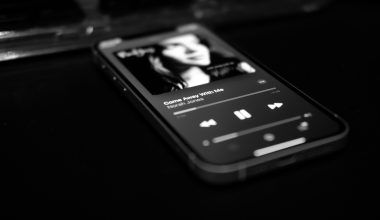Music has a magical way of connecting with people, and lyrics are the soul of every song. When you put lyrics to music, you breathe life into words, creating melodies that linger in hearts and minds. Whether you’re a budding songwriter or someone who simply loves expressing through music, this guide will walk you through the process of turning your thoughts into harmonious tunes.
Why Put Lyrics to Music?
Songs are an art form that blends emotions, storytelling, and rhythm. When you match your lyrics with music, you give your story a new dimension. It helps convey feelings that words alone cannot. Whether you want to inspire, heal, or entertain, pairing your lyrics with melodies allows your message to resonate deeply.
Songs can also immortalize your words. Think about the classic tracks that have stood the test of time. They do more than entertain—they tell stories, evoke emotions, and connect people. By putting your lyrics to music, you have the chance to create something meaningful that can reach audiences far and wide.
Start with the Right Mindset
Songwriting is a creative process that takes patience and practice. Before diving in, remind yourself that it’s okay to experiment and make mistakes. Sometimes, the first tune or lyric pairing might not feel perfect, and that’s normal. Focus on enjoying the journey rather than rushing to complete a masterpiece.
If you’re struggling to match your lyrics with music, take a step back and ask yourself what emotions or message you want to convey. This clarity will guide your creative decisions.
Understanding the Basics of Music and Lyrics
To effectively put lyrics to music, it helps to have a basic understanding of music structure. Here are a few key elements to keep in mind:
- Melody: This is the tune that your lyrics will follow. It’s the part people hum or sing.
- Rhythm: The beat or pace of the song. Your lyrics need to flow with this rhythm.
- Chord Progressions: These are the foundation of your song. A good chord progression complements your lyrics and enhances the mood.
- Song Structure: Most songs have a familiar structure—verse, chorus, bridge, and sometimes a pre-chorus.
Learning these basics will help you create a strong connection between your lyrics and the music.
How to Begin: Inspiration and Idea Generation
Every great song starts with an idea. Here’s how you can find inspiration:
- Personal Experiences: Reflect on your emotions, relationships, or memories. Songs that come from the heart often connect the most.
- Books, Movies, or Poetry: Borrow themes or phrases from stories that move you.
- Nature and Surroundings: Sometimes, a simple walk in the park can spark a melody or lyric.
- Conversations: Listen to the phrases people use. Everyday language can make your song relatable.
Once you have an idea, jot down your thoughts. Even if they’re messy, don’t worry—you’ll refine them as you go. The goal is to capture your emotions and ideas.
Writing Lyrics That Sing
When writing lyrics, focus on creating phrases that are both meaningful and singable. Here are some tips to help:
- Use Imagery: Instead of saying, “I’m sad,” describe the feeling. For example, “Rain clouds cover my heart” paints a picture.
- Rhyme and Rhythm: Rhymes make your song memorable, while rhythm helps it flow naturally.
- Keep It Simple: Overcomplicating your lyrics can make them hard to sing. Stick to straightforward language.
- Repeat Key Phrases: Repetition reinforces the song’s message and makes it catchy.
Experiment with different lines and see which ones feel right. Remember, lyrics are meant to be sung, so try singing them aloud as you write.
Creating a Melody for Your Lyrics
Now comes the exciting part—creating a melody. A melody should complement your lyrics and evoke the right emotions. Here’s how to start:
- Hum It Out: Start by humming or singing your lyrics. Pay attention to the natural rise and fall of your voice.
- Experiment with Notes: Use a piano, guitar, or a music app to play around with different notes and see what feels right.
- Focus on the Chorus: This is the highlight of your song, so make it catchy and emotionally impactful.
- Don’t Overthink: Sometimes, the simplest melodies work best. Trust your instincts.
Matching Chords to Your Melody
Chords add depth and richness to your song. If you’re new to chords, start with basic ones like C, G, Am, and F. These are versatile and work well with many melodies.
- Begin by playing a chord progression.
- Sing your melody along with the chords to see how they fit.
- Adjust as needed to create harmony between the chords and your melody.
Remember, the right chord progression can elevate your song from good to unforgettable.
Refining Your Song
Once you’ve put your lyrics to music, it’s time to polish your song. Here’s how:
- Record and Listen: Use your phone or computer to record your song. Listening back helps you identify areas for improvement.
- Seek Feedback: Share your song with friends, family, or fellow musicians. Constructive feedback can provide valuable insights.
- Edit with Purpose: Tweak your lyrics, melody, or chords as needed. Don’t be afraid to make changes to achieve the best result.
Adding Finishing Touches
Consider adding harmonies, instrumental solos, or dynamic shifts to make your song more engaging. Small details like these can make your song stand out.
Tips for Staying Inspired
- Write Regularly: The more you practice, the better you’ll get at putting lyrics to music.
- Listen to Other Songs: Analyze how your favorite artists match lyrics with melodies.
- Collaborate: Working with other musicians can spark new ideas.
- Stay Open: Inspiration can strike anywhere, so always be ready to jot down or record your ideas.
Conclusion
Putting lyrics to music is a rewarding journey that combines creativity and emotion. With practice, patience, and the tips shared in this guide, you’ll be able to create songs that resonate with listeners. So grab your instrument, let your imagination flow, and start turning your words into melodies that leave a lasting impression.
Remember, every great songwriter started somewhere. Your unique voice and perspective are what will make your songs special. Now, go ahead and put your lyrics to music—your masterpiece awaits!
For further reading, explore these related articles:
- A Journey Through the Best Album Art of All Time
- The Best Album Covers Ever: Why They Matter and Stories Behind Them
For additional resources on music marketing and distribution, visit DMT Records Pvt. Ltd..






